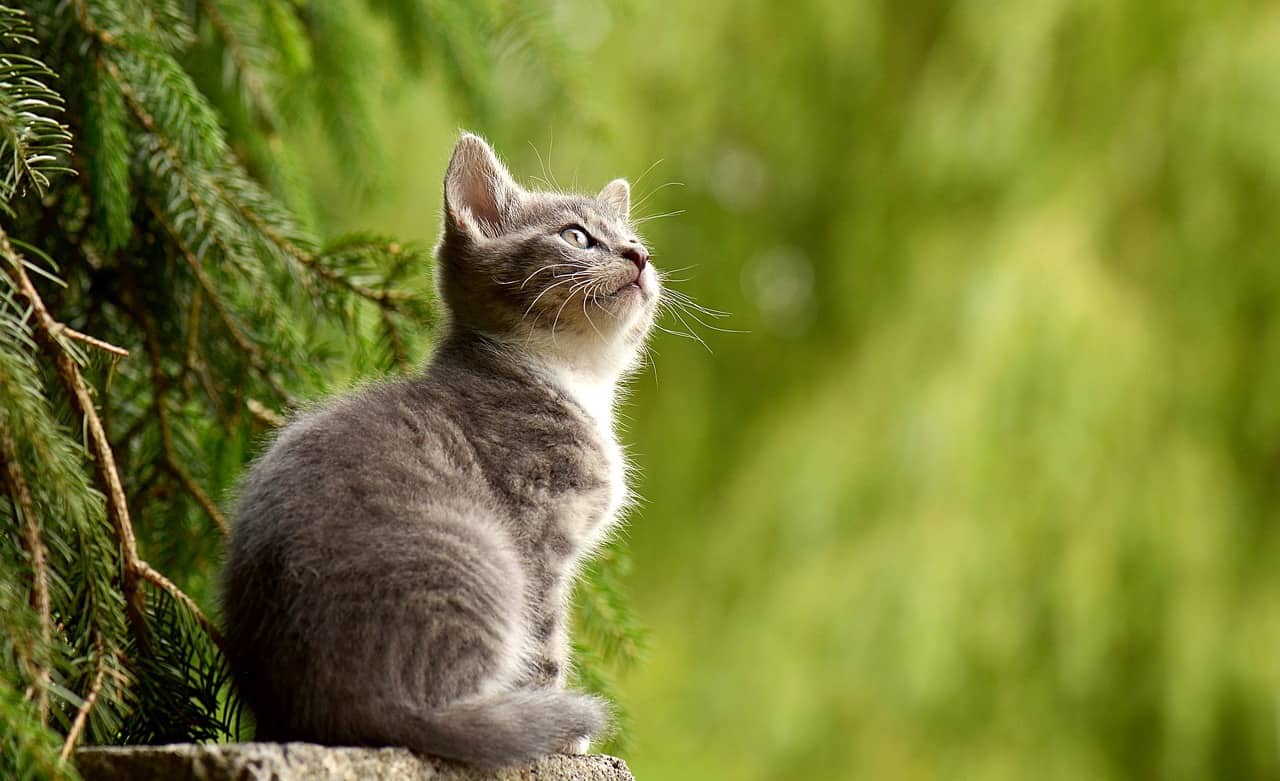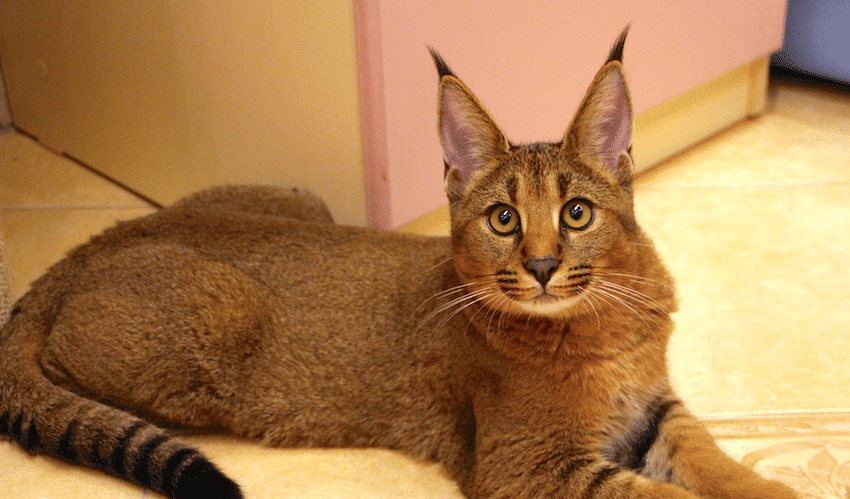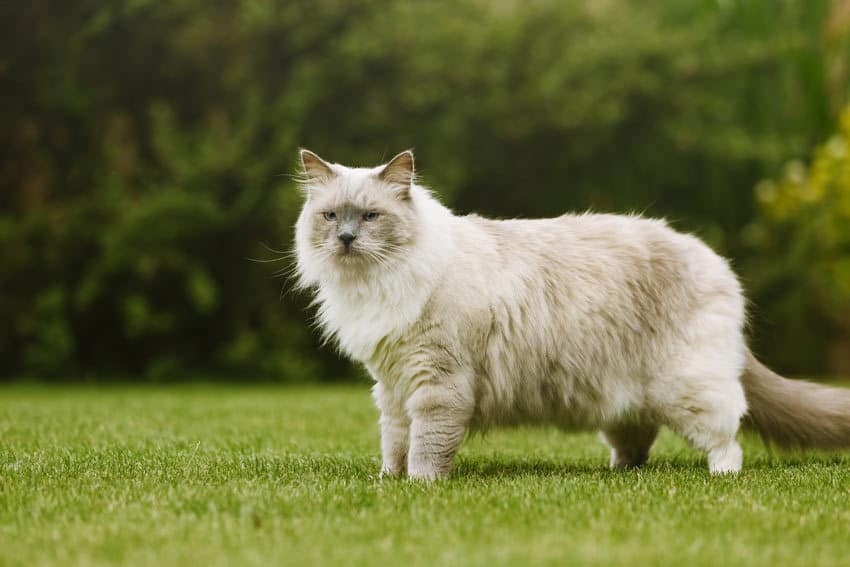Table of Contents

With so many different colors, patterns and breeds out there, it can be hard to tell what breed your cat is! To help you determine what breed your cat is, we’re going to take a look at all the things that can set your cat apart from others. For the most part, the determining factors between the breeds are based on fur length, color and pattern. Read on to learn more about identifying what is my cat’s breed.
Mixed breeds and pure breeds
Mixed breeds

Mixed breed cats are the most common you’re likely to find out there. Anything referred to as a “domestic” is typically a mix. Because cat breeds typically aren’t as distinguishable as dog breeds, it simplifies things to refer to them in this manner. For the most part, any cat that isn’t obviously a specific breed is labeled as a domestic, though they can sometimes have DNA from well-known breeds. In most cases, these cats are too mixed to be able to tell what breeds they may contain.
Pure breeds

On the other hand, there are the pure breeds. These are typically going to be more objectively noticeable because pure cat breeds often have strong distinguishing features. For example, Maine Coons are often large, long-haired and have strong facial features. Meanwhile, sphynx cats are easy to distinguish because they have no fur covering their bodies like most other cats. In most cases, pure breed cats have a unique appearance that really makes them stand out when compared to other cats.
Below is short video on how to identify cat breeds:
Fur Length
The length of your cat’s fur can also play into what breed or breeds they may be. Naturally, with no fur they are likely to be a sphynx; with typical short hair they could have any number of breed ancestry. Meanwhile, long-haired cats may have Persian, Main Coon, or other types of ancestry that is distinguished by long, luxurious fur. Even between cats of the same fur length, you may find that their texture is a little bit different.
Cat fur patterns
The color and patterns in your cat’s fur can also show you a bit about their heritage. Because of that, it’s important to know what each color typing is called and how it may set your cat apart from others. There are so many colors and patterns out there, along with unique markings that help you to tell one cat from the other.
Solid colors
There are a number of solid colors out there that can show up in cat fur. Colors like black, white, gray, and orange are among the most popular. While these colors alone may not be representative of different breeds, the color and other markings on your cat can really bring out the unique appearance of your pet. There are also some interesting differences that can come with the colors. For example, white cats are more prone to being deaf.
Tabby
Tabby refers to a specific kind of pattern that is quite common in cats. Many people can tell them apart from others because of the tiger-stripe appearance. You may find that some cats can be entirely of this tabby coloring or they can be mixed with some areas of white. Tabby can also occur in a wide range of coloring, including those with black and gray striping, orange striping and even brown and tan striping. You can also find this coloring among many different breeds, from Maine Coons to the domestic shorthair.
Tortoiseshell
Many people think of tortoiseshell as a backwards kind of calico. Whereas calicos often seem white with a variation of other colors, tortoiseshell cats almost appear black with areas of orange and different shades of tan added in. They can also be found in both patched and brindled styles of coloring. The main difference between tortoiseshell and calico cats will be that tortoiseshells are known for the absence of white. So, if you’re unsure as to which your cat is, look for some white coloring!
Calico
Calicos are an interesting coloring option in the cat world. You’ll often find that they share many colors with the tortoiseshell, but with the addition of white coloring as well. What really sets this pattern apart is that calico cats are rarely born male, with the vast majority being female. In most cases, if you do get a male calico then they tend to be sterile.
Tuxedo
Tuxedo cats are something many of us are familiar with. They wear a combination of black and white coloring which typically consists of a mostly black coat with the potential additions of a white stomach, chest and paws. You can also find this coloring in both mixed and pure breeds such as Persians, Manx, Maine Coons and even Devon Rex cats!
Other determining factors
Aside from their fur, there are also a number of other features that can set one cat apart from others. These can be made up of the facial features, personality, leg length, number of toes, and more!
To begin with, different breeds can have different facial features. For example, some may have more rounded ears while others have very pointed ears. Different breeds can also have different eye-coloring, and some breeds, like the Siamese, can be more prone to having crossed eyes than others. Coloring in the face can also help with your determination.
There are some other obvious signifiers such as the leg length and number of toes. Munchkin cats can be easily discerned by their short, stubby legs. Some other cats, known as polydactyl, have more than the standard number of toes. Some may have six or even seven on their front paws, and a slightly lesser number on the back paws. Some breeds are more prone to this difference than others.
Some might say that gender is also a determining factor of identifying the breed. If so, it is important for you to know the gender of your cat to eliminate some of the possibilities in determining a breed.
Finally, the personality of your cat can also be adapted from certain breeds. Some breeds are more “dog-like” and friendly while others may not favor people as much.
Conclusion
Not all cats are going to have a breed that is easily discernible, but that doesn’t mean the cat isn’t unique. From the coloring to the personality, every cat has their own history and ancestry.